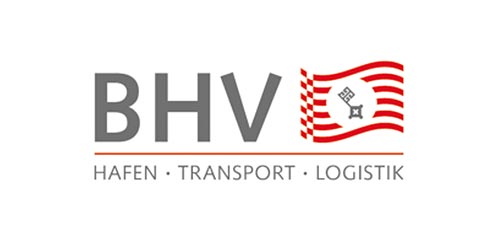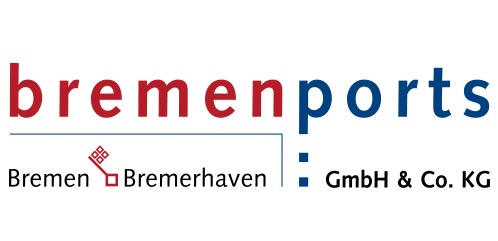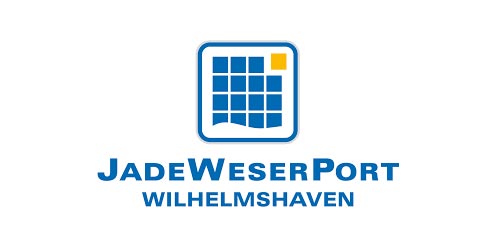Upon leaving his role as a captain at Hapag-Lloyd in May of this year, Stephan Berger has swapped steering container ships with directing the fortunes of the ports in Bremen and Bremerhaven as the new head of the Bremen Port Authority, succeeding the retired Andreas Mai.
Photos: Claudia Behrend
The job description sounds quite bureaucratic when you look more closely … “The port captain is responsible for ship control within the port area, port security and the approval of service providers to provide security-related services.” In Stephan Berger’s case, however, the concept of too much jargon is no cause for concern. After all, since stepping into the role as new port captain and head of the Hansestadt Bremisches Hafenamt (HBH), Berger’s work has so far been dominated by nautical tasks, and he is well aware of that. “I’m still working my way further into administrative duties,” the 40-year-old tells us with a smile. Of course, this is an understatement – after the first few months, the former Hapag-Lloyd captain has not only familiarised himself with the administrative aspects of the role at a rapid pace, he can also faultlessly present the many areas of responsibility and competencies of his job and describe them in a structured and comprehensible manner. It must be said, though, that calling it ‘the top job’ is not altogether accurate. Strictly speaking, he has four jobs to contend with – those of nautical officer and head of the port authority, as well as those of port captain for both Bremerhaven and Bremen. This all sounds more complicated than it is, and it is not always possible to separate these roles quite so precisely. “Simply put,” he explains, “I coordinate and organise the operation of Bremen’s ports.” Essentially, there are three sub-areas he is responsible for – those of port operations, port security and his administrative tasks.
Port operations
One of his main responsibilities is to maintain the port’s operations. “I’m responsible for ensuring that shipping traffic in the port is safe and easy,” explains the captain. This work includes drawing up the traffic flow plan for the locks, and planning and monitoring them. The HBH works closely with bremenports in doing so, he expands: “We’ve already taken a big step forward here with the implementation of digital lock control, which supports the lock keepers in their work,” Berger reports proudly.

Facts
Hansestadt Bremisches Hafenamt (HBH)
Tasks: Managing body of the port
Head of Department and Port Captain: Stephan Berger
Locations: Bremen andBremerhaven
Employees: 80
More information:
Variety guaranteed – whether it is in the industrial port, the timber port, the Neustadt port or in Bremerhaven, Bremen’s ports always offer port captain Berger a different challenge.
Another focus of his work is the monitoring of ship movements, such as the allocation of berths, where particular attention must be paid to draughts. “With the ‘digital Weser’ project, we’re looking to implement the just-in-time arrivals concept, JIT for short, in both Bremen and Bremerhaven in the future, in a similar fashion to the Hamburg Vessel Coordination Center,” says Berger. The terminal availability determines the optimum operating speed for the ship up to the pilot boarding point. In addition, Berger is also currently involved in designing a new port development concept for Bremen’s ports, which will lay the foundations for future port expansion. The new port captain has already implemented his first IT project – optimising the provision of Automatic Identification System (AIS) data from ships. This information is used in the radio exchange of navigation and other data relevant to the safety and guidance of shipping traffic. “Previously, we received this ship data in raw form, meaning we ultimately couldn’t use it,” explains Berger. “Now, the data is updated around the clock and displayed on nautical charts, which gives us a quick overview of shipping traffic in and around Bremen’s ports.” Last but not least, port operations include tugboats and pilots too. In both Bremerhaven and Bremen, the HBH is also responsible as a neutral authority for the licensing of maritime assistance companies, as they are correctly referred to under economic administrative law. As a state authority, it is also the supervisory body for port pilots. In contrast, the Weser pilots are only responsible in the port of Bremen, on the Weser and Jade rivers and in the territorial waters, and are under the authority of the German federal government. “When new port pilots are appointed, i.e. approved, I am one of the examiners,” he confirms.
Port security
As in all seaports across the globe, the International Ship and Port Facility Security Code (ISPS Code) has been in force in Bremen and Bremerhaven since the 9/11 terrorist attacks in New York in 2001, and HBH is responsible for complying with it. “We are responsible for auditing the port companies and compiling the security policy for the entire port. We are, in turn, then audited by the coastguard,” explains the port captain. In addition, the HBH must be able to provide information about all hazardous materials in the port, where they are and in what quantities, at all times. “For this purpose, we receive the container numbers and the hazard classification from the terminal operators via the ‘BrePos’ port information system,” Berger explains. “We then carry out random checks to ensure that the containers are securely packed and correctly labelled.” Moreover, he adds, if customs officers notice anything in the course of their duties, the port authority is notified immediately. Other important areas of responsibility for Berger are health and safety in the workplace and environmental issues. “We are also responsible for the terminals, including the sheds, for example in Holzhafen, Industriehafen and Neustädter Hafen, and we also check that access to the ship is safe,” he explains. “If we suspect something is not quite right, we take fuel samples and check their compliance with the sulphur limit. We have a testing device for this purpose in Bremerhaven.” The Berufsgenossenschaft Verkehr (BG-Verkehr) and the water police also bring their samples for checking with the HBH’s testing device.
Logistics Pilot
The current print edition - request it now free of charge.
With the launch of the ‘Hafenamt I’, chartered by bremenports, port captain Berger works in the Bremen port area.







